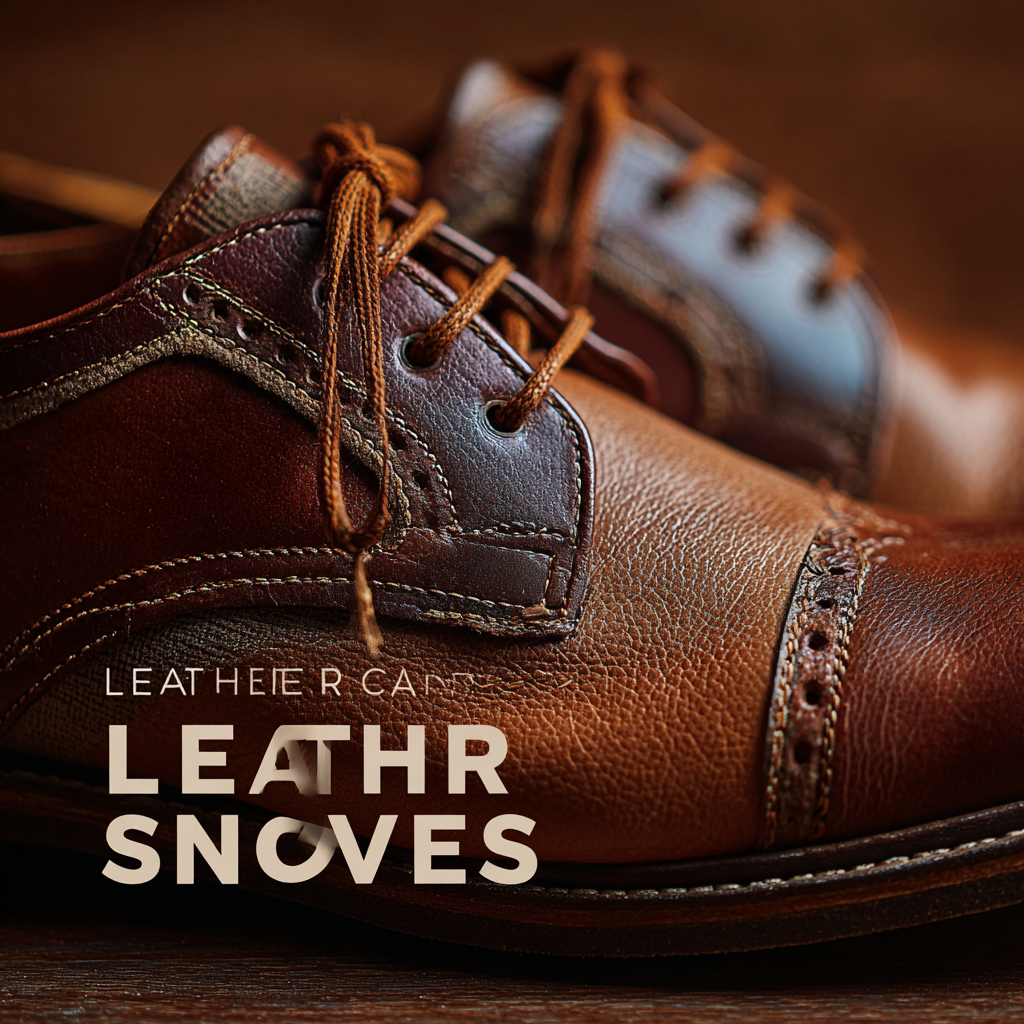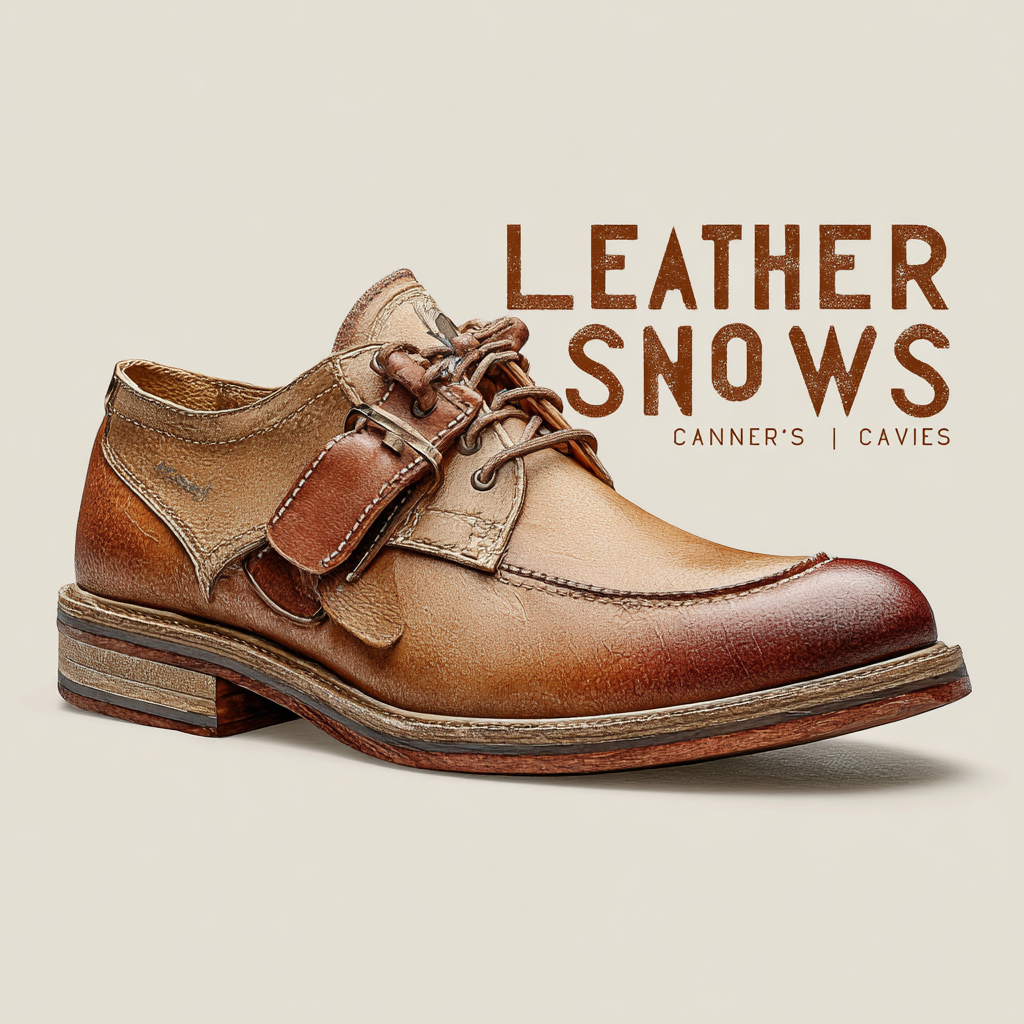As we look toward 2025, the intersection of technology and fashion is poised to significantly reshape consumer choices, especially in categories like Leather Canvas Shoes. According to a recent report by the Footwear Distributors and Retailers of America (FDRA), the global footwear market is projected to reach $530 billion by 2027, with the demand for stylish yet sustainable options on the rise.
 Furthermore, a study by Statista reveals that consumer purchasing behavior is increasingly influenced by innovative technologies such as augmented reality and artificial intelligence, which enhance the shopping experience. As consumers seek personalized, eco-friendly choices, understanding how to navigate these 2025 tech trends will be crucial in selecting the best Leather Canvas Shoes.
Furthermore, a study by Statista reveals that consumer purchasing behavior is increasingly influenced by innovative technologies such as augmented reality and artificial intelligence, which enhance the shopping experience. As consumers seek personalized, eco-friendly choices, understanding how to navigate these 2025 tech trends will be crucial in selecting the best Leather Canvas Shoes.
This guide will delve into industry standards and provide actionable insights, ensuring that your footwear choices are not only fashionable but also aligned with emerging technological advancements.
The evolution of leather and canvas materials in the footwear industry reflects a dynamic interplay between tradition and innovation. Leather, long celebrated for its durability and timeless aesthetic, has undergone substantial transformation with advancements in tanning techniques and sustainable sourcing practices. Today, eco-friendly options such as vegetable-tanned leather and recycled materials are becoming increasingly popular, appealing to the environmentally conscious consumer. This shift not only enhances the ethical footprint of footwear production but also introduces new textures and finishes that exude modernity while retaining the classic appeal of leather.
On the other hand, canvas has made a strong resurgence as a versatile and lightweight alternative to leather. Initially favored for its practicality, canvas has undergone significant enhancement through innovative treatments that improve water resistance and durability. Brands are now experimenting with patterns, colors, and blends, pushing the boundaries of traditional canvas designs. This evolution in materials not only caters to the functional demands of active lifestyles but also opens up new avenues for personal expression, making canvas shoes a fashionable choice for various occasions. As we look towards 2025, understanding these material advancements will empower consumers to make informed choices in selecting the best leather and canvas shoes that reflect their style and values.
In 2025, the landscape of shoe design and production will be transformed by several key technologies that are revolutionizing how consumers choose the best leather canvas shoes. Advances in 3D printing are at the forefront, enabling brands to create custom-fit shoes efficiently while minimizing waste. According to a report from Smithers, the global 3D printing market for footwear is expected to reach $2.2 billion by 2024, highlighting the growing adoption of this technology in the footwear industry.

Additionally, artificial intelligence (AI) is playing a pivotal role by analyzing consumer preferences and behavior. By leveraging big data, shoe brands can predict trends and customize offerings to better suit individual needs. Research from McKinsey indicates that AI-driven solutions could help businesses reduce manufacturing costs by up to 30% while improving design accuracy. Furthermore, eco-friendly materials are gaining popularity, with brands increasingly incorporating sustainable practices and raw materials to appeal to environmentally conscious consumers, as highlighted in a recent study by Nielsen, which found that 73% of global respondents are willing to change their consumption habits to reduce environmental impact.
As consumer preferences heavily influence the footwear market, a recent analysis reveals significant shifts in the choice between leather and canvas shoes. The growing demand for faux leather, projected to expand from $37.59 billion in 2025 to $57.94 billion by 2032, reflects a broader trend towards sustainable and ethical shopping. Data from various fashion weeks indicate that consumers are increasingly prioritizing not just style but also the environmental impact of their purchases. The preference for eco-friendly materials is expected to reshape the landscape of both casual and athletic footwear.

Moreover, the U.S. shoe and footwear market is on a remarkable growth trajectory, valued at approximately $95.1 billion in 2024 and projected to exceed $125.7 billion by 2032. This growth is expected to encompass a diverse range of styles and materials, catering to different consumer needs. Insights from industry reports suggest a shift in consumer behavior towards brands that not only provide quality but also resonate with values of sustainability and innovation. As we move towards 2025, understanding these consumer preferences will be essential for both established brands and new entrants in the footwear industry.
As we approach 2025, sustainability is no longer a trend but a vital criterion influencing consumer choices in the fashion industry, particularly in leather and canvas shoes. Eco-conscious brands are leading the charge by utilizing sustainable materials, such as vegetable-tanned leather and recycled canvas, which significantly reduce environmental impact. With increasing awareness about the repercussions of fast fashion, consumers are gravitating towards companies that prioritize ethical production practices, showcasing transparency in their sourcing and manufacturing processes.
Moreover, advancements in technology play a pivotal role in shaping these sustainable trends. Innovations like 3D printing and bio-based materials enable manufacturers to minimize waste and extend the lifespan of products. As our understanding of sustainability deepens, consumers are also exploring options like circular fashion, where shoes can be returned for recycling or upcycling. By 2025, the integration of sustainability in the selection process will not only enhance the appeal of leather and canvas shoes but also empower consumers to make choices that align with their values, ensuring that their style does not come at the expense of the planet.
When choosing high-quality leather and canvas shoes, understanding the essential features based on industry standards is crucial. Recent market analyses indicate that the kids' footwear segment is poised to reach substantial growth, with the leather and non-leather categories gaining significant traction. In fact, the global leather footwear market is expected to exceed $200 billion by 2025, driven by increasing demand for quality and durability among consumers. This shift illustrates the importance of selecting shoes that not only fit properly but also utilize high-grade materials that can withstand the rigors of daily usage.
Moreover, sustainability has become a key consideration in the footwear market. Industry leaders are increasingly adopting eco-friendly practices, aligning with the evolving preferences of environmentally conscious consumers. Leather and canvas materials are evaluated based on their production processes, and consumers are encouraged to seek brands that prioritize transparency and ethical sourcing. Features such as water resistance, breathability, and a solid construction should be at the forefront of your selection process, ensuring that your shoes not only meet aesthetic values but also adhere to performance benchmarks that offer long-lasting comfort and style.
This chart illustrates the key features that consumers consider when choosing high-quality leather and canvas shoes in 2025. Scores indicate the importance of each feature, with comfort being the most valued aspect of shoe selection.
